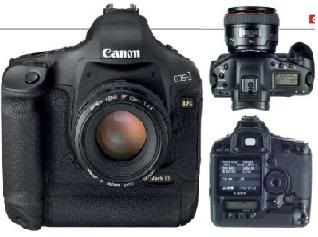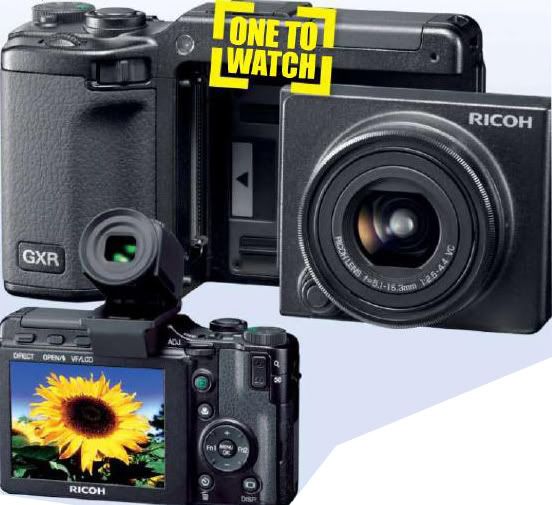Short version: If you are familiar with the Nikon D300, then you can just expect more of the same. The D300s doesn’t do anything ground breaking, but what it does is add some nice features to an already excellent DSLR — most importantly, HD video and SD card support.
The D300s is the latest version of Nikon’s award-winning D300, which was released in August of 2007. The D300s features a 12.3 megapixel, DX-format sensor, and supports an ISO range of 200 to 3200. Nikon also gave the D300s their 51 point auto-focus system, which makes it exceptionally easy to get a crisp image while shooting. The D300s also has the same 3 inch LCD display as the D300 on the back of the body, which is great for reviewing your shots or when you are using the “Live View” mode. At $1800, it’s firmly in the “prosumer” price range.
There are a few major differences from the D300, which I own. The biggest change is the inclusion of video. The D300s allows you to capture video at 24fps, at either 720p (for a 5-minute continuous shot), 640×424 (for 20 minutes), or 320×216 (also 20 minutes). The D300s also has a “quiet shutter” mode, which is perfect for wildlife photography, and they added the ability to use an SD card as well as a CF card, the previous standard. It is possible to use both cards at once, and there are a couple of ways to do that. You can specify that you want video on one, and pictures on the other, use one as overflow for the other, or manually shuffle them between the two cards as you see fit. I actually prefer to use the backup mode, which writes the picture to both cards at the same time.
Ergonomics: Not much has changed, really: the D300s uses the same magnesium alloy body as the D300, with the same textured rubber that most cameras use. The controls are a bit more intuitive, and the memory card cover release has been replaced with some more function buttons.
Picture Quality: Outstanding. Nikon used a faster processor in the D300s, and it shows. The autofocus (one of the things that didn’t work *quite* right on D300) is fast and intelligent, the picture controls are intuitive, and the end results are outstanding. Nikon’s inclusion of custom picture control settings makes it easy to get everything exactly how you want it, consistently. I use a couple of custom settings that allow me to duplicate the look of some of the most famous types of film, like Fuji Velvia and Agfa Optima.
Video: The 720p looks very impressive. I’ve always been somewhat skeptical of those cameras that try to do two things, because they rarely do them well. Camcorders rarely shoot good still pictures, and still cameras just don’t do video that well. The bad news is, that’s still the case here. Yes, the picture quality is great because the D300s uses great lenses, and a huge (comparatively) sensor. However, the auto-focus is pretty sketchy, and you can REALLY hear the focus motors when you are recording. Also, if you’re not using a tripod, you’re going to have a video that looks like it was filmed by Matt after his energy drink post.
Battery life: The EN-EL3e Li-on battery takes up 950 shots on a single charge, depending on how much time you spending viewing and editing your pictures in camera. I recently went on a trip to Yosemite (the sample pictures you see are from that trip) and shot the entire weekend on one charge. One. That’s pretty damn impressive, and I wasn’t even trying to stretch the battery life out.
Pros: The D300s is a great camera. This is the second version of this model, and Nikon has done a great job improving it. The quiet shutter mode is nice, the auto-focus is faster now, the dual memory slots are nice, if not particularly necessary (SD memory cards are cheaper than CF card though). Also, adding the new dedicated “Info” button was a really good idea.
Cons: Video isn’t quite there yet. Yes, the image quality is much better then what you’ll get from a camcorder, and the HD video is crisp and clear, but that auto-focus noise is just too much (plus it’s slow). I also noticed that the auto ISO and auto WB aren’t accurate all of the time. This could be my personal bias, but I typically end up adjusting those items myself.
Now, in the interest of comparison, I mentioned that I own a D300. I bought one a few months after it came out after much research and reading, and I’m a fan of the original. As such, I was very interested when I heard that Nikon was going to be releasing an update to my much loved D300. Will I be upgrading? Probably not. The video feature isn’t enough to make me switch, and I think I’ll be waiting to go to full frame for my next upgrade. If I didn’t already own D300, would I buy a D300s? Absolutely. No question about it. The Nikon D300s is still the best “prosumer” level DSLR on the market today.
To be fair, there is another possible contender for the crown that is not on the market today just arriving on the market. That would be the Canon 7D. It’s around the same price point (MSRP is actually a bit cheaper, at $1699), and if the published information is to be believed, the Canon’s video modes will be better then the D300s (though likely have the same problems). Canon has stated that their camera will capture HD video at 30, 25, and 24 FPS, and will also allow more manual control then the Nikon. As for the rest, well, the eternal Nikon vs. Canon conflict goes on. We’ll just have to wait and see who exactly rules the roost after the Canon is released.























 2008 - 2009 SimplexDesign. Content in
2008 - 2009 SimplexDesign. Content in